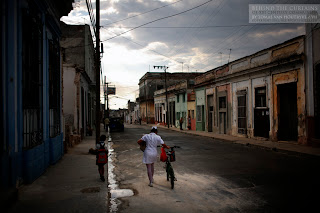What exactly is landscape architecture? I asked myself when spending time looking at the exquisite pictures in this tome. It is, the publisher informs me, "one of the hottest areas of contemporary design" and its objects are "the green areas around houses, stadiums, or corporate headquarters." Wikipedia calls it "the design of outdoor public areas, landmarks, and structures to achieve environmental, social-behavioral, or aesthetic outcomes." This means that landscape architecture includes urban design, site planning, town planning, parks and recreation planning ... in short, pretty much anything that surrounds us and can be an object of design, planning and management.
"For the purpose of this book," writes Philip Jodidio, "landscape architecture is defined not only as the formation of gardens but also of buildings that have an intimate relation to nature, that in some sense spring from the earth and give meaning to space and materials." I'm not really sure in what sense gardens and buildings can "spring from the earth and give meaning to space and materials," but the examples found in this work are more than just extraordinary, they also make one admire the creativity and skills of their creators.
The list of contributors is impressive and includes (my selection is rather arbitrary) Zaha Hadid (Eleftheria Square Redesign, Nicosia, Cyprus), Steven Holl (Vanke Center / Horizontal Skyscraper, Shenzhen, China), and Yoshiaki Nakamura (Miho Museum Gardens, Shigaraki, Shiga, Japan).
"For the purpose of this book," writes Philip Jodidio, "landscape architecture is defined not only as the formation of gardens but also of buildings that have an intimate relation to nature, that in some sense spring from the earth and give meaning to space and materials." I'm not really sure in what sense gardens and buildings can "spring from the earth and give meaning to space and materials," but the examples found in this work are more than just extraordinary, they also make one admire the creativity and skills of their creators.
The list of contributors is impressive and includes (my selection is rather arbitrary) Zaha Hadid (Eleftheria Square Redesign, Nicosia, Cyprus), Steven Holl (Vanke Center / Horizontal Skyscraper, Shenzhen, China), and Yoshiaki Nakamura (Miho Museum Gardens, Shigaraki, Shiga, Japan).
John Pawson: Sackler Crossing, Royal Botanic Gardens, Kew, London
For somebody like me, who isn't familiar with landscape architecture, this book offers discoveries abound. One of my favourites is the work of the Officina del Paesaggio, run by Sophie Agata Ambroise, and especially her Community Gardens in Chiasso, Switzerland - a space, as she points out, not only for cultivation but also a place to meet and relax. I'm sure, one of my next trips will be to Chiasso ...
Philip Jodidio
For somebody like me, who isn't familiar with landscape architecture, this book offers discoveries abound. One of my favourites is the work of the Officina del Paesaggio, run by Sophie Agata Ambroise, and especially her Community Gardens in Chiasso, Switzerland - a space, as she points out, not only for cultivation but also a place to meet and relax. I'm sure, one of my next trips will be to Chiasso ...
Philip Jodidio
Landscape Architecture Now!
(English, German, French)
Taschen, Cologne 2012






























